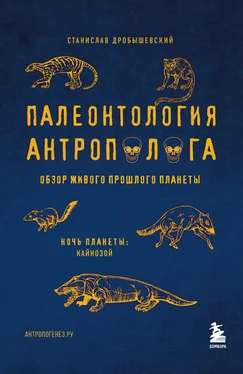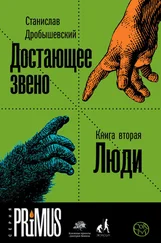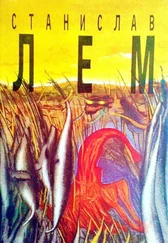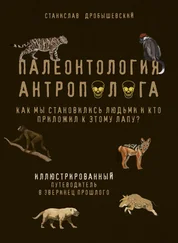Adams D. B. The cheetah: native American // Science, 1979, V.205, pp.1155–1158. Miracinonyx inexpectatus .
Agenbroad L. D. Mammuthus exilis from the California Channel Islands: height, mass, and geologic age // Proceedings of 15 the 7th California Islands Symposium. Eds.: Damiani C. C. et Garcelon D. K. Institute for Wildlife Studies, Arcata, 2009, pp.15–19.
Ambrose S. H. Late Pleistocene human population bottlenecks, volcanic winter, and differentiation of modern humans // Journal of Human Evolution, 1998, V.34, pp.623–651. Извержение вулкана Тоба.
American megafaunal extinctions at the end of the Pleistocene. Ed.: Haynes G. Springer Science + Business Media B. V., 2009, 201 p.
Biknevicius A. R., McFarlane D.A. et MacPhee R.D.E. Body size in Amblyrhiza inundata (Rodentia, Caviomorpha), an extinct megafaunal rodent from the Anguilla Bank, West Indies: estimates and implications // American Museum Novitates, 1993, V.3079, pp.1–25.
Bocherens H., Schrenk F., Chaimanee Ya., Kullmer O., Morike D., Pushkina D. et Jaeger J. – J. Flexibility of diet and habitat in Pleistocene South Asian mammals: implications for the fate of the giant fossil ape Gigantopithecus // Quaternary International, 2017, V.434, pp.148–155.
Buckley M. Ancient collagen reveals evolutionary history of the endemic South American ‘ungulates’ // Proceedings of the Royal Society B: Biological Sciences, 2015, V.282, № 20142671, pp.1–9.
Camens A. B. et Worthy T. H. Walk like a kangaroo: new fossil trackways reveal a bipedally striding macropod in the Pliocene of Central Australia // Journal of Vertebrate Paleontology, Programs and Abstracts, 2019, p.72. Ходьба короткомордых кенгуру.
Campbell K. E. et Tonni E. P. Preliminary observations on the paleobiology and evolution of teratorns (Aves: Teratornithidae) // Journal of Vertebrate Paleontology, 1981, V.1, № 3–4, pp.265–272.
Campbell K. E. et Tonni E. P. Size and locomotion in teratorns (Aves: Teratornithidae) // Auk, 1983, V.100, pp.390–403.
Campbell K. E., Frailey C. D. et Romero-Pittman L. The Pan-Amazonian Ucayali Peneplain, late Neogene sedimentation in Amazonia, and the birth of the modern Amazon River system // Palaeogeography, Palaeoclimatology, Palaeoecology, 2006, V.239, pp.166–219. Формирование Амазонки.
Cooper A., Turney Ch., Hughen K. A., Brook B. W., McDonald H.G. et Bradshaw C. J.A. Abrupt warming events drove Late Pleistocene Holarctic megafaunal turnover // Science, 2015, V.349, pp.602–606. Совместная роль климата и людей в вымирании мегафауны.
Crevecoeur I., Brooks A., Ribot I., Cornelissen E. et Semal P. Late Stone Age human remains from Ishango (Democratic Republic of Congo): new insights on Late Pleistocene modern human diversity in Africa // Journal of Human Evolution, 2016, V.96, pp.35–57.
Curnoe D., Xueping J., Herries A. I.R., Kanning B., Tacon P. S.C., Zhende B., Fink D., Yunsheng Zh., Hellstrom J., Yun L., Cassis G., Bing S., Wroe S., Shi H., Parr W. C.H., Shengmin H. et Rogers N. Human remains from the Pleistocene-Holocene transition of Southwest China suggest a complex evolutionary history for East Asians // PLoS ONE, 2012, V.7, № 3, № e31918, pp.1–28. Китайских «недохоббит» из Дейедун.
Durvasula A. et Sankararaman S. Recovering signals of ghost archaic admixture in the genomes of present-day Africans // Science Advances, 2020, V.6, № eaax5097, pp.1–9. Примесь от неизвестных гоминид у африканцев.
Emslie S. D. The fossil history and phylogenetic relationships of condors (Ciconiiformes: Vulturidae) in the New World // Journal of Vertebrate Paleontology, 1988, V.8, № 2, pp.212–228. Кондор Gymnogyps kofordi .
Fiedel S. J. Man’s best friend – mammoth’s worst enemy? A speculative essay on the role of dogs in paleoindian colonization and megafaunal extinction // World Archaeology, 2005, V.37, № 1, Archaeology in North America, pp.11–25. Люди и их собаки – главная причина вымирания мегафауны в Северной Америке.
Fiedel S. et Haynes G. A premature burial: comments on Grayson and Meltzer’s “Requiem for overkill” // Journal of Archaeological Science, 2004, V.31, pp.121–131. Люди – главная причина вымирания мегафауны в Северной Америке.
Field J. et Dodson J. Late Pleistocene megafauna and archaeology from Cuddie Springs, southeastern Australia // Proceedings of the Prehistoric Society, 1999, V.65, pp.275–301.
Firestone R. B., West A., Kennett J. P., Becker L., Bunch T. E., Revay Z. S., Schultz P. H., Belgya T., Kennett D. J., Erlandson J. M., Dickenson O. J., Goodyear A. C., Harris R. S., Howard G. A., Kloosterman J. B., Lechler P., Mayewski P. A., Montgomery J., Poreda R., Darrah T., Que Hee S. S., Smith A. R., Stich A., Topping W., Wittke J. H. et Wolbach W. S. Evidence for an extraterrestrial impact 12,900 years ago that contributed to the megafaunal extinctions and the Younger Dryas cooling // Proceedings of the National Academy of Sciences USA, 2007, V.104, № 41, pp.16016–16021. Похолодание в дриасе из-за падения кометы.
Gathorne-Hardy F.J. et Harcourt-Smith W.E.H. The super-eruption of Toba, did it cause a human bottleneck? // Journal of Human Evolution, 2003, V.45, pp.227–230. Критика влияния извержения вулкана Тоба.
Geer van der A., Lyras G., Vos de J. et Dermitzakis M. Evolution of island mammals. Adaptation and extinction of placental mammals on islands. Wiley-Blackwell, 2010, 479 p.
Gervais H. et Ameghino F. Les mammiferes fossiles de l’Amerique du Sud. Paris, Librairie F. Savy, Buenos Aires, Igon Hermanos, 1880, 227 p.
Graham R. W. et Lundelius E. L. Coevolutionary disequilibrium and Pleistocene extinctions // Quaternary extinctions: a prehistoric revolution. Eds.: Martin, P.S. et Klein R. G. Tuscon, The University of Arizona Press, 1984, pp.223–249. Роль климата в вымирании мегафауны.
Grayson D. K. et Meltzer D. J. A requiem for North American overkill // Journal of Archaeological Science, 2003, V.30, pp.585–593. Люди не были причиной вымирания мегафауны в Северной Америке.
Grellet-Tinner G., Spooner N. A. et Worthy T. H. Is the “ Genyornis ” egg of a mihirung or another extinct bird from the Australian dreamtime? // Quaternary Science Reviews, 2016, V.133, pp.147–164. Сомнения в принадлежности скорлупы яиц “ Genyornis ”.
Hammer M. F., Woerner A. E., Mendez F. L., Watkins J. C. et Wall J. D. Genetic evidence for archaic admixture in Africa // Proceedings of the National Academy of Sciences USA, 2011, V.108, № 37, pp.15123–15128. Примесь от неизвестных гоминид у африканцев.
Harvati K., Stringer Ch., Grun R., Aubert M., Allsworth-Jones Ph., Folorunso C. A. The Later Stone Age calvaria from Iwo Eleru, Nigeria: morphology and chronology // PLoS ONE, 2011, V.6, № 9, № e24024, pp.1–8.
Hocknull S. A., Lewis R., Arnold L. J., Pietsch T., Joannes-Boyau R., Price G. J., Moss P., Wood R., Dosseto A., Louys J., Olley J. et Lawrence R. A. Extinction of eastern Sahul megafauna coincides with sustained environmental deterioration // Nature Communications, 2020, V.11, № 2250, pp.1–14. Климат как причина вымирания австралийской мегафауны.
Hsieh PH., Woerner A. E., Wall J. D., Lachance J., Tishkoff S. A., Gutenkunst R. N. et Hammer M. F. Model-based analyses of whole-genome data reveal a complex evolutionary history involving archaic introgression in Central African Pygmies // Genome Research, 2015, V.26, pp.1–10. Примесь от неизвестных гоминид у африканцев.
Читать дальше
Конец ознакомительного отрывка
Купить книгу









![Станислав Дробышевский - Палеонтология антрополога. Книга 1. Докембрий и палеозой [litres]](/books/404766/stanislav-drobyshevskij-paleontologiya-antropologa-thumb.webp)


